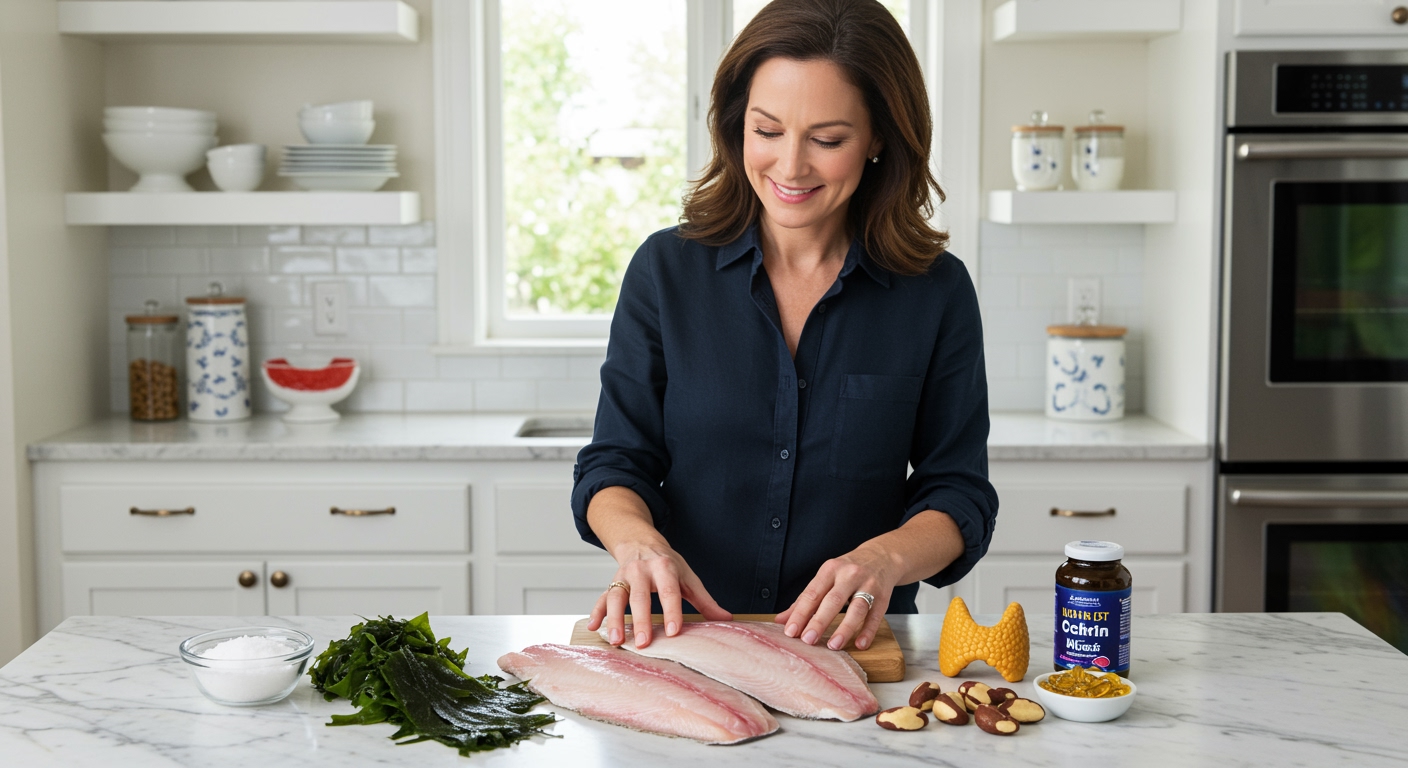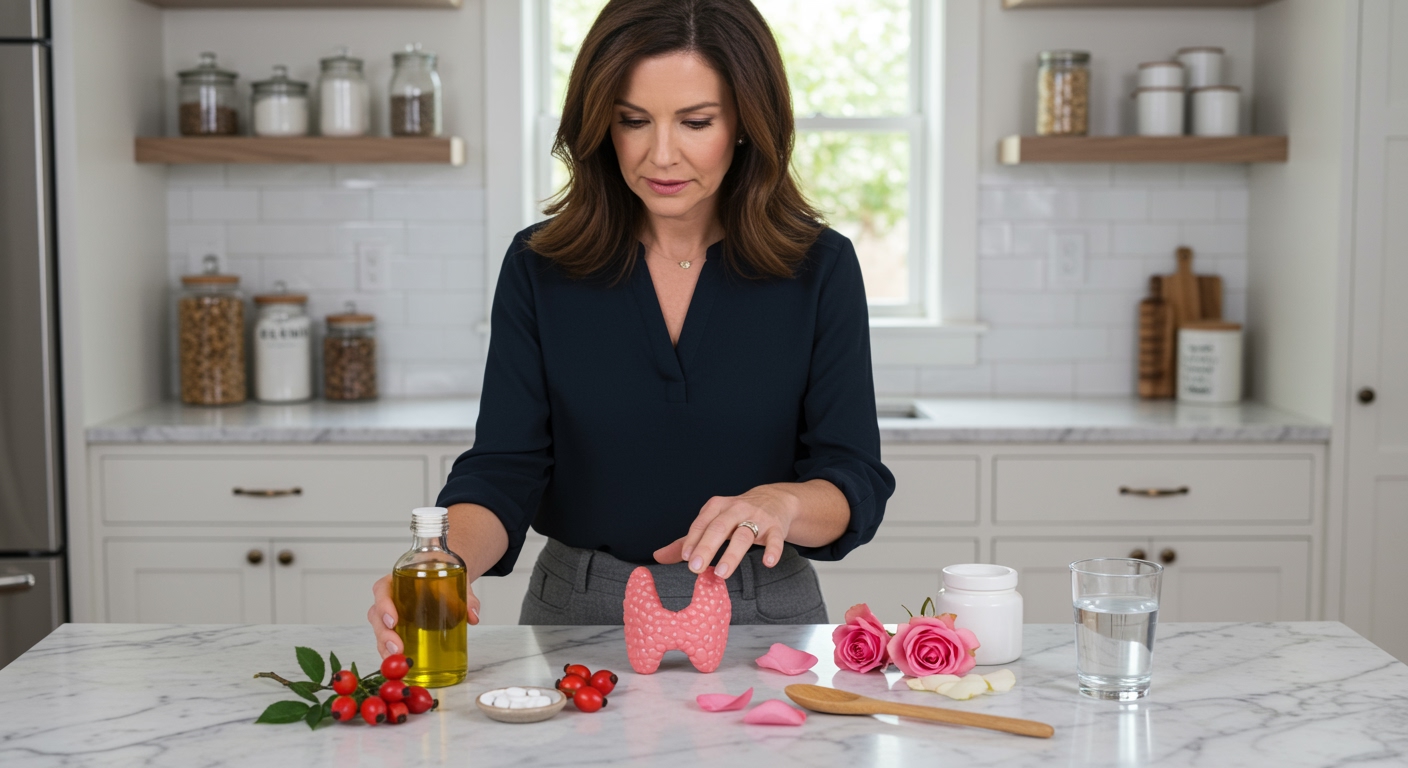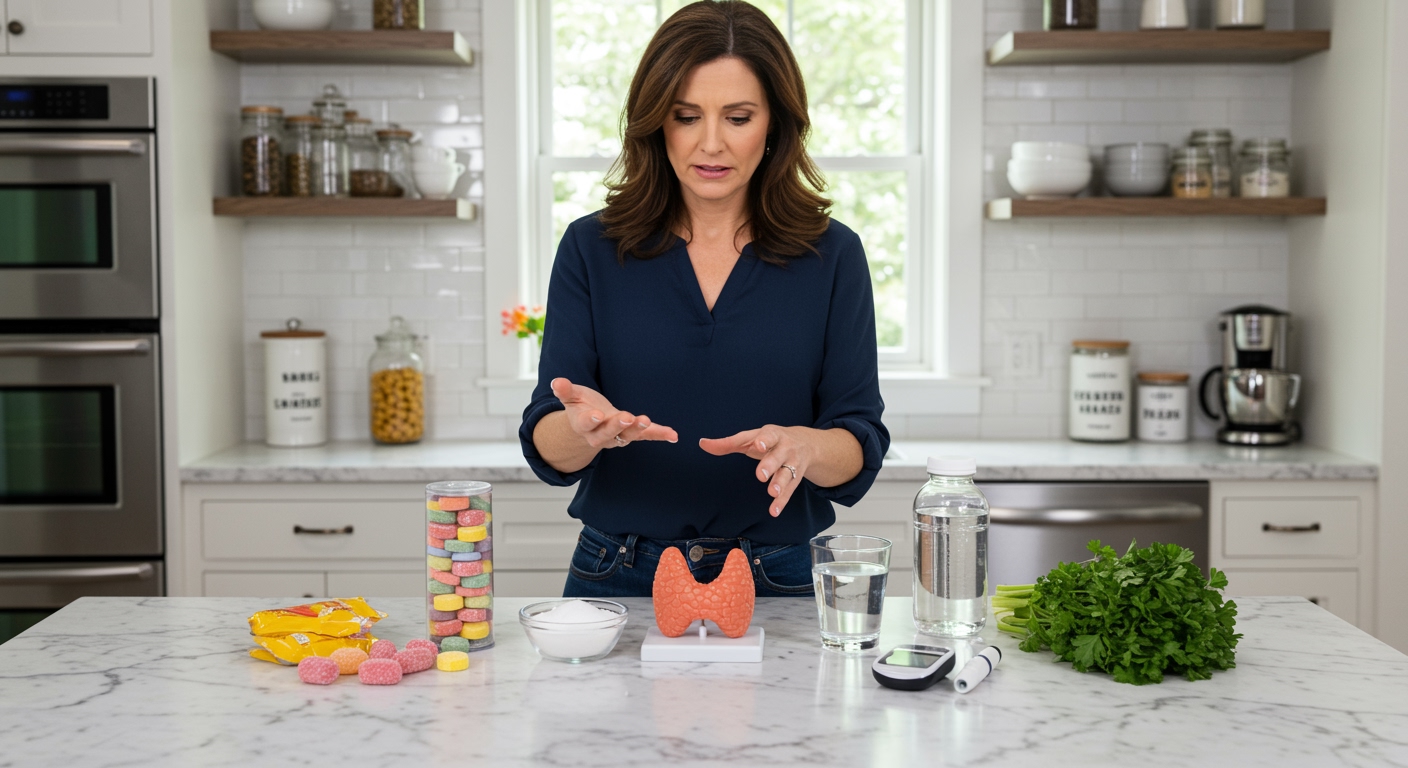✪ Key Takeaway: Plaice is good for hypothyroidism because it provides selenium, omega-3 fatty acids, and protein without excessive iodine.
Introduction
You walk through the fish market and spot plaice sitting on ice with its distinctive orange spots staring back at you.
You might be wondering if this flatfish can help your sluggish thyroid or if it will make your condition worse.
Hi, I am Abdur, your nutrition coach and today I am going to explain exactly how plaice affects your thyroid function and whether you should add it to your weekly meal plan.
What Makes Plaice Different From Other Fish For Thyroid Health?
Plaice is a flatfish that lives on the ocean floor and feeds on small crustaceans and mollusks.
This feeding pattern gives plaice a unique nutritional profile compared to fish that swim in open water.
The fish contains moderate amounts of selenium, which is a mineral your thyroid needs to convert T4 hormone into the active T3 form.
Your thyroid uses selenium to produce enzymes called deiodinases that remove iodine atoms from T4 to create T3.
Without enough selenium, your body cannot perform this conversion efficiently, leaving you with hypothyroid symptoms even if your T4 levels look normal.
Plaice provides about 30 micrograms of selenium per 100 grams, which covers roughly 55 percent of your daily requirement.
The fish also delivers high-quality protein with all essential amino acids your thyroid needs to produce hormones and maintain cellular function.
✪ Fact: Plaice contains approximately 18 grams of protein per 100 grams, making it an excellent lean protein source for thyroid support.
Does Plaice Provide Enough Iodine Without Causing Problems?
The iodine content in plaice sits in a moderate range that benefits most people with hypothyroidism.
Most white fish like plaice contain between 50 to 100 micrograms of iodine per 100 grams.
This amount provides meaningful iodine without the excessive levels found in seaweed or kelp supplements.
Your thyroid needs iodine to produce thyroid hormones, but too much iodine can actually suppress thyroid function temporarily.
This phenomenon is called the Wolff-Chaikoff effect, where your thyroid shuts down hormone production when exposed to extremely high iodine levels.
Plaice gives you enough iodine to support hormone production without triggering this protective mechanism.
The fish becomes especially valuable if you avoid iodized salt or dairy products, which are common iodine sources in modern diets.
✪ Pro Tip: Eat plaice two to three times weekly to maintain steady iodine intake without the risk of excessive supplementation.
How Do Omega-3 Fatty Acids In Plaice Help Your Thyroid?
Plaice contains omega-3 fatty acids EPA and DHA that reduce inflammation throughout your body, including your thyroid gland.
Many people with hypothyroidism also have Hashimoto thyroiditis, which is an autoimmune condition where your immune system attacks your thyroid.
The inflammation from this autoimmune attack damages thyroid cells and reduces hormone production over time.
Omega-3 fatty acids help calm this inflammatory response by producing specialized molecules called resolvins and protectins.
These molecules signal your immune system to stop the attack and begin repairing damaged tissue.
Research shows that people with higher omega-3 intake have lower levels of thyroid antibodies, which indicates less autoimmune activity.
While plaice is not as rich in omega-3s as salmon or mackerel, it still provides meaningful amounts that support thyroid health when eaten regularly.
✪ Note: Plaice contains approximately 0.3 grams of omega-3 fatty acids per 100 grams, which contributes to your daily anti-inflammatory needs.
Can Plaice Help If You Take Thyroid Medication?
Plaice works well alongside thyroid medication like levothyroxine because it provides nutrients that enhance medication effectiveness.
The selenium in plaice helps your body convert the synthetic T4 in your medication into active T3 hormone.
Many people taking thyroid medication still feel tired and sluggish because their bodies struggle with this conversion process.
Adding selenium-rich foods like plaice can improve how well your medication works without changing your dose.
The protein in plaice also supports your liver, which performs about 60 percent of the T4 to T3 conversion in your body.
You should eat plaice at least four hours away from taking your thyroid medication to avoid any potential absorption issues.
The calcium and other minerals in fish can bind to thyroid medication and reduce how much your body absorbs.
✪ Pro Tip: Take your thyroid medication first thing in the morning and enjoy plaice for lunch or dinner to maximize both benefits.
What Is The Best Way To Prepare Plaice For Thyroid Health?
The cooking method you choose affects how many nutrients remain in your plaice by the time you eat it.
Baking or steaming plaice preserves the most selenium and omega-3 fatty acids compared to frying or grilling at high temperatures.
High heat damages the delicate omega-3 fats and creates oxidized compounds that can increase inflammation instead of reducing it.
You should cook plaice at temperatures below 350 degrees Fahrenheit to protect these beneficial fats.
Adding herbs like rosemary, thyme, or parsley provides extra antioxidants that protect the fish during cooking.
Avoid breading or battering plaice because the refined flour and vegetable oils add empty calories and inflammatory fats.
A simple preparation with lemon juice, olive oil, and herbs gives you maximum thyroid benefits without unnecessary ingredients that work against your health goals.
✪ Fact: Steaming plaice for 8 to 10 minutes preserves up to 95 percent of its selenium content compared to only 70 percent with high-heat frying.
The Bottom Line
Plaice is genuinely good for hypothyroidism because it delivers selenium, moderate iodine, omega-3 fatty acids, and quality protein that your thyroid needs to function properly.
Good nutrition is not about finding one perfect food but building a pattern of smart choices that support your body day after day.
I would love to hear about your experience with plaice or any questions you have about fish and thyroid health, so please share your thoughts in the comments below.
References
At NutritionCrown, we use quality and credible sources to ensure our content is accurate and trustworthy. Below are the sources referenced in writing this article:
- Cleveland Clinic: Hypothyroidism
- Mayo Clinic: Hypothyroidism (underactive thyroid)
- National Institute of Diabetes and Digestive and Kidney Diseases: Hypothyroidism (Underactive Thyroid)
- British Dietetic Association: Iodine Food Fact Sheet
- National Center for Biotechnology Information: Selenium and the Thyroid





